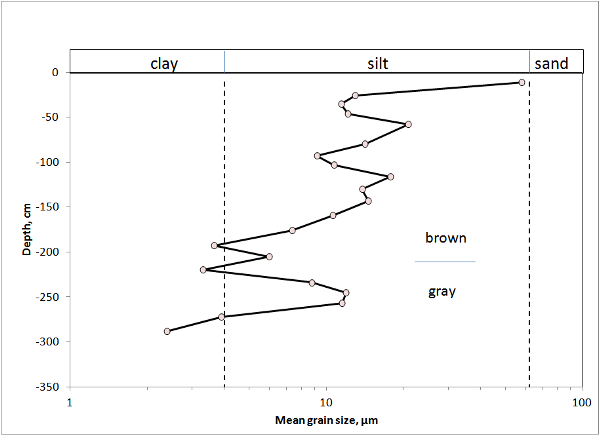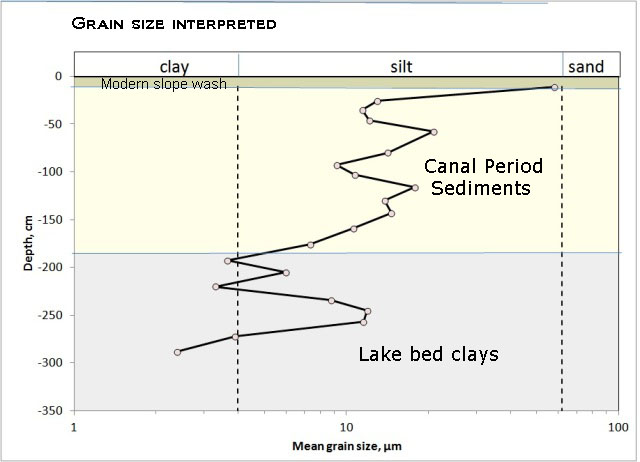During the fall of 2011, Surface Processes class in the Department of Geology at the University of Cincinnati undertook a series of measurements on one of a pair of former ponds that had been used as make-up water for the Miami & Erie Canal [map]. Grain size of the material was almost entirely in the silt range (Fig. 1). Samples were taken from a trench excavated to the water table at a depth of about 5 feet, and also from bucket auger samples extending to about 8 feet. Earlier probing at this site had suggested a total depth of soft fill of about 20 feet in the deepest part.

Grain Size Procedure
- A small amount, about 5 grams, of each auger sample was placed in a test tube
- sodium hexametaphosphate (Calgon) was added to the sample to help disaggregate the clays
- The samples were left to soak over night
- The samples were added to the Coulter Counter and sonicated to further disaggregate the clays.
- Tests were run in the Coulter Counter three times and then averaged.
- Statistics from the runs showed the vertical distribution of the mean, the median, and the standard deviation to be very similar.
